Force Production for Runners
December 6, 2022
Force production is a result of loading tension and then dynamically unloading, giving us a greater output and muscle contraction in a given direction or action.

Anytime we see an athlete jump, sprint, or throw, this is a result force production. It's created by the unloading phase where the body releases with the power of a loaded coil, (concentric) propelling it in the given direction.
Why do we need force production ?
Force production is in everything we do, from taking a step forward, to jumping for a basketball. Athletes who need a sport-specific outcome must train to be explosive, quick, and know how to create full body tension. An easy entry point to understanding and training explosive power is kettlebell training, because it is based completely around manipulating your center of mass, making patterns easier to understand and execute. There are other tools to train force production, but learning to maximize your power output and understanding how to use that to your advantage is most important, no matter the modality.
Types of Force Production
Vertical Force Production
Now let's talk about the difference between the two. Vertical Force Production, as implied in the name is to move upwards, as in to jump and without traveling forward. When moving a kettlebell, this demand requires a more vertical torso (squat-like position), dropping your hips and wedging your weight under the bell. It's hard to to hold the position for long because your body is set up like a spring, creating a demand to jump or get the bell off the ground in an upward direction resulting in triple extension through the ankle hips and t-spine. We can train this pattern in variations of cleans, snatches, and high pulls.
Horizontal Force Production
By comparison, the Horizontal Force Production involves moving forward or backwards. The set up for this within a kettlebell context is a 45 degree angle of the torso and the hips bumped up higher. This set up demands more work from the hips, recruiting all posterior power (aka your glutes and hamstrings). When reaching the peak of a kettlebell swing you are in a standing plank and the bell is pointing directly away from you. If you were to let the bell go it should be able to travel a distance horizontally; conversely if you were to perform this unloaded, you should then jump forward. This pattern is trained in variations of kettlebell swings.
A specific note to runners: these athletes need both horizontal force production to help them move forward in stride, as well as some vertical force, since running is basically jumping from one foot to the other. Before you load these patterns in a workout, you must prepare the body with unloaded/ lightly loaded variations or breakdowns of the properties that will be trained in that given session. We can achieve this by using A-skips, C-skips, pogos, broad jumps, isometric single leg deadlift holds, carries, etc.
For runners, a big part of jumping from foot to foot and being able to tolerate the constant pounding the joints take is training force absorption. This is what comes before the unloading or power output we just discussed, and is equally if not more important.
Force Absorption
Force Absorption in these terms is the (eccentric)deceleration of the joints and muscles to load, then the quick and dynamic stabilization of keeping the body from collapsing (isometric). For example, you step off a curb wrong and have to catch yourself. Your body must intrinsically and reactively absorb your weight and stabilize on a new surface. No time to think about what is going on or how to best set up to land; it just needs to do it.
Training absorption can be as simple as eccentric squat or hinge patterns where you can teach your body how to move through a pattern slowly and with good form. From there, you can progress to dynamic situations like the bottom of a jump or swing. Loaded and unloaded variations trained together can give you the demand you are asking those muscles for.
Force Absorption and Production are necessary and work in harmony, yet are trained differently.
Force Production Examples
Vertical Force Production Examples:
Clean Variations: Dead start and continuous 2 Hand, Single Arm (Double & squat clean not pictured)
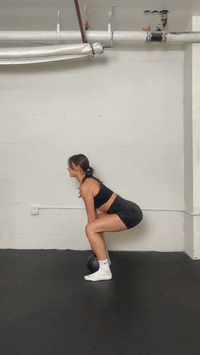 |
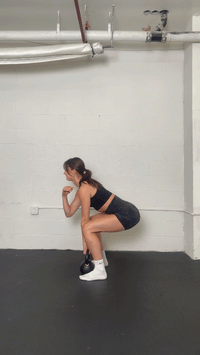 |
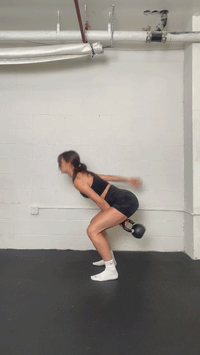 |
Snatch Variations: Dead start and continuous, single arm or double (not pictured)
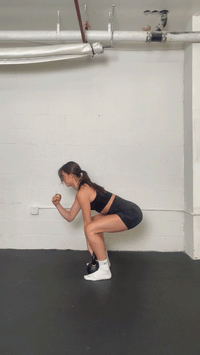 |
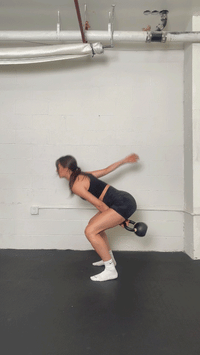 |
Press Variations: left to right Single Arm Push Press, Jerk, Thruster (double not pictured)
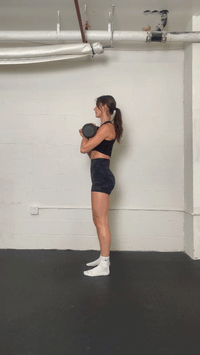 |
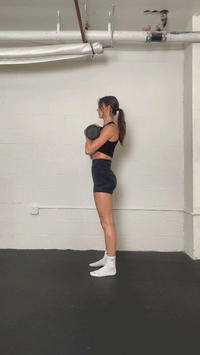 |
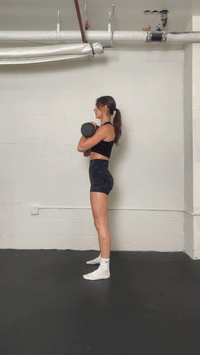 |
Horizontal Force Production examples:
Dead-stop Swings: 2 hand, Double (Single Arm not pictured)
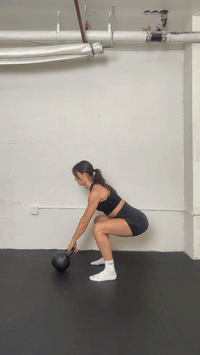 |
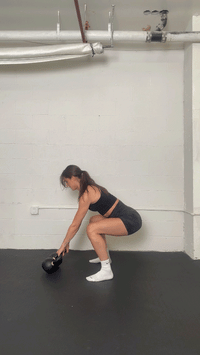 |
Continuous Swings: 2 Hand , Single Arm, Double
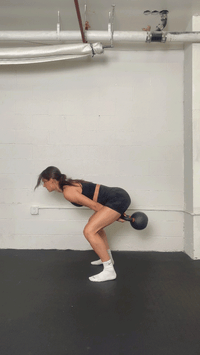 |
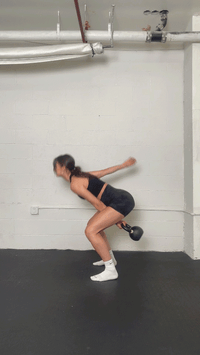 |
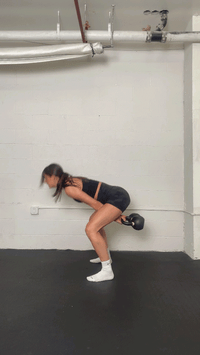 |

